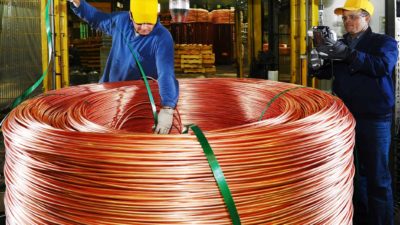Are you wanting some exposure to the resources sector?
If you are then there are two big names that often come up when you look at this side of the market.
One is Rio Tinto Ltd (ASX: RIO) and the other is Woodside Energy Group Ltd (ASX: WDS).
But which one is the better buy right now? Let's have a look at what Goldman Sachs is saying.
Rio Tinto stock or Woodside stock?
According to recent notes, the broker believes that Rio Tinto is the superior option for investors looking for some resources sector exposure.
Goldman likes Rio Tinto due to its positive production and free cash flow outlook. It has described the diversified mining giant as a production growth story thanks to its copper equivalent growth, which is being underpinned partly by the expansion of the Oyu Tolgoi operation in Mongolia. It said:
RIO is a FCF and production growth story in our view, with forecast Cu Eq production growth of ~4-7% in 2025 & 2026 driven by the ramp-up of the Oyu Tolgoi UG copper mine & a recovery at Escondida and Bingham, higher Pilbara Fe shipments with the ramp-up of new mines, and a rebound in aluminium production + the acquisition of Matalco.
The broker currently has a buy rating and $136.20 price target on its shares. Based on the current Rio Tinto share price of $121.79, this implies potential upside of almost 12% for investors over the next 12 months.
In addition, the broker is forecasting a dividend yield of approximately 4.5% over the same period. This boosts the total potential return beyond 16%.
What about Woodside?
Another recent note reveals that Goldman has a neutral rating on the energy giant's shares. Though, it is worth noting that its price target for Woodside of $27.20 actually offers more upside than the broker's price target for Rio Tinto.
Based on its current share price of $24.16, this suggests that Woodside's shares could rise almost 13% from current levels. It also expects a dividend yield similar to Rio Tinto's over the next 12 months.
Commenting on its recommendation, Goldman said:
Relatively full valuation: Trading at ~0.9x NAV, where we see higher exposure to risk of schedule delays and capex increases eroding upside to our valuation, particularly as Scarborough and Pluto Train 2 comprises ~30% of our NAV and remains in development until 2026.
Limited near term production growth to offset gas price weakness: We expect production to remain relatively flat over the near term with a ~-1% CAGR to 2027 as Mad Dog 2 and Sangomar oil ramp up offsets existing decline at the North West Shelf and Bass Strait, leaving earnings largely exposed to softening commodity prices.









